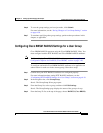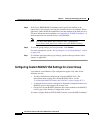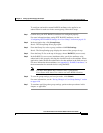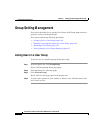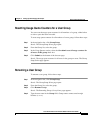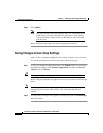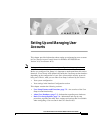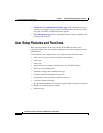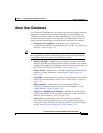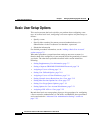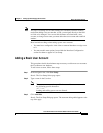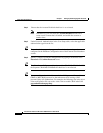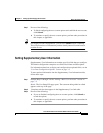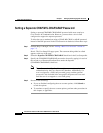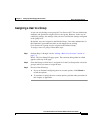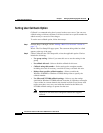
7-3
Cisco Secure ACS 3.0 for Windows 2000/NT Servers User Guide
78-13751-01, Version 3.0
Chapter 7 Setting Up and Managing User Accounts
About User Databases
About User Databases
Cisco Secure ACS authenticates users against one of several possible databases,
including its CiscoSecure user database. Regardless of which database you
configure Cisco Secure ACS to use when authenticating a user, all users have
accounts within the CiscoSecure user database, and authorization of users is
always performed against the user records in the CiscoSecure user database.
• CiscoSecure user database—Authenticates a user from the local
CiscoSecure user database. For more information, see the “CiscoSecure User
Database” section on page 11-2.
Tip The following authentication types appear in the HTML interface only when
the corresponding external user database has been configured in the Database
Configuration area of the External User Databases section.
• Windows NT/2000—Authenticates a user with an existing account in the
Windows NT/2000 user database located in the local domain or in domains
configured in the Windows NT/2000 user database. For more information, see
the “Windows NT/2000 User Database” section on page 11-6.
• Generic LDAP—Authenticates a user from a Generic LDAP external user
database. For more information, see the “Generic LDAP” section on
page 11-14.
• Novell NDS—Authenticates a user using Novell NetWare Directory Services
(NDS). For more information, see the “Novell NDS Database” section on
page 11-24.
• ODBC Database—Authenticates a user from an Open Database
Connectivity-compliant database server. For more information, see the
“ODBC Database” section on page 11-30.
• LEAP Proxy RADIUS Server Database—Authenticates a user from an
LEAP Proxy RADIUS server. For more information, see the “LEAP Proxy
RADIUS Server Database” section on page 11-44.
• Token Server—Authenticates a user from a token server database.
Cisco Secure ACS supports the use of a variety of token servers for the
increased security provided by one-time passwords. For more information,
see the “Token Server User Databases” section on page 11-47



